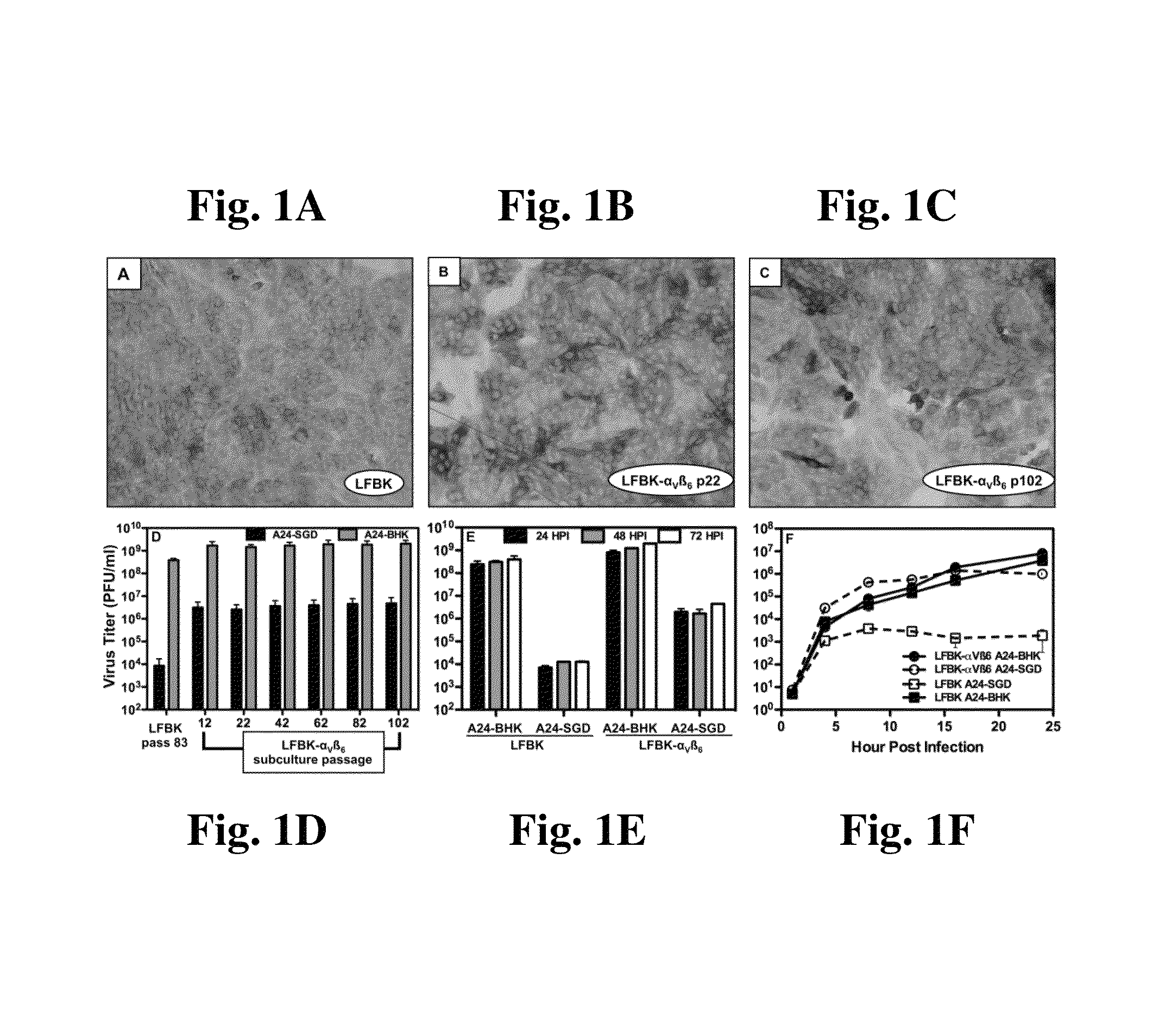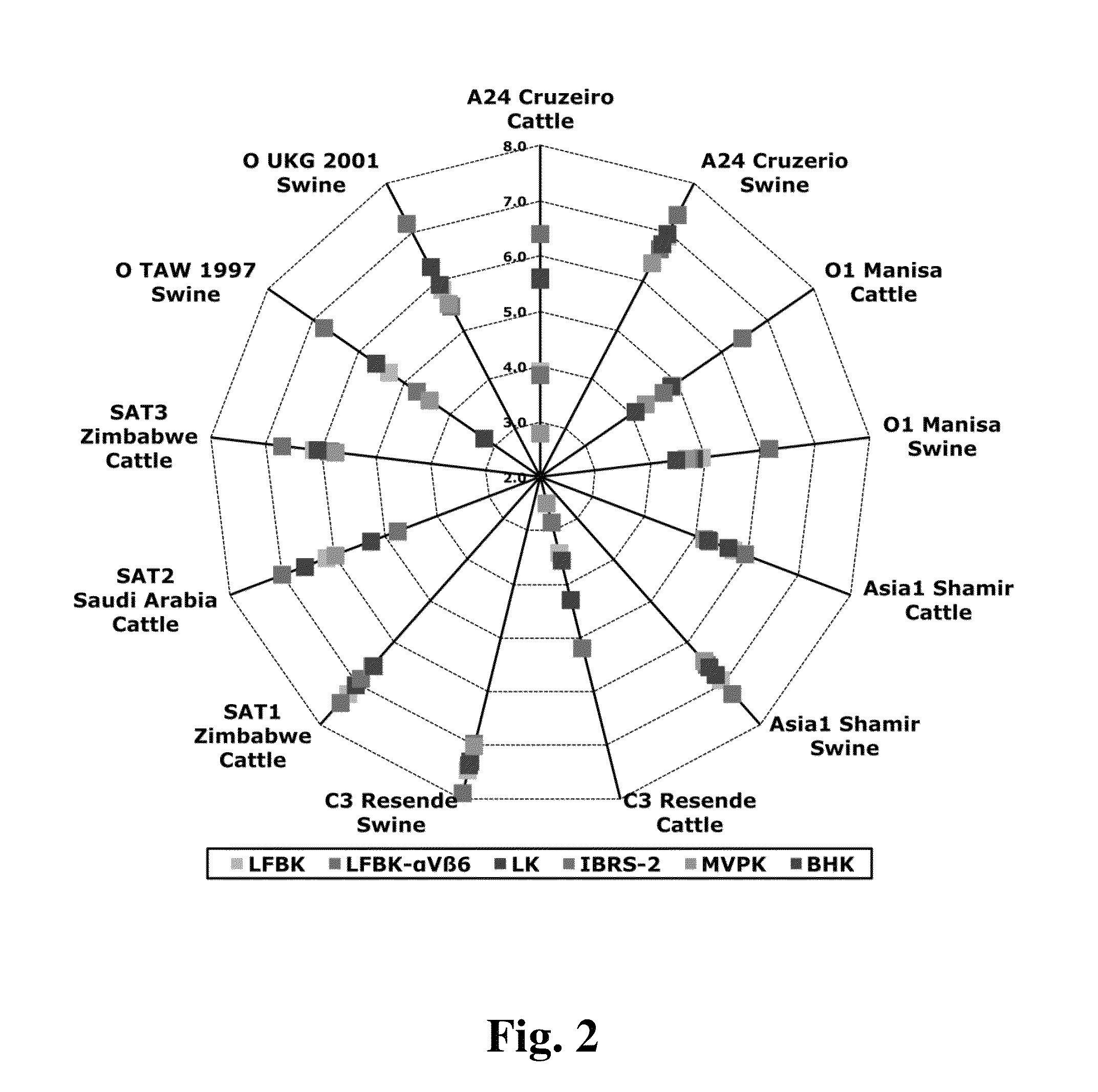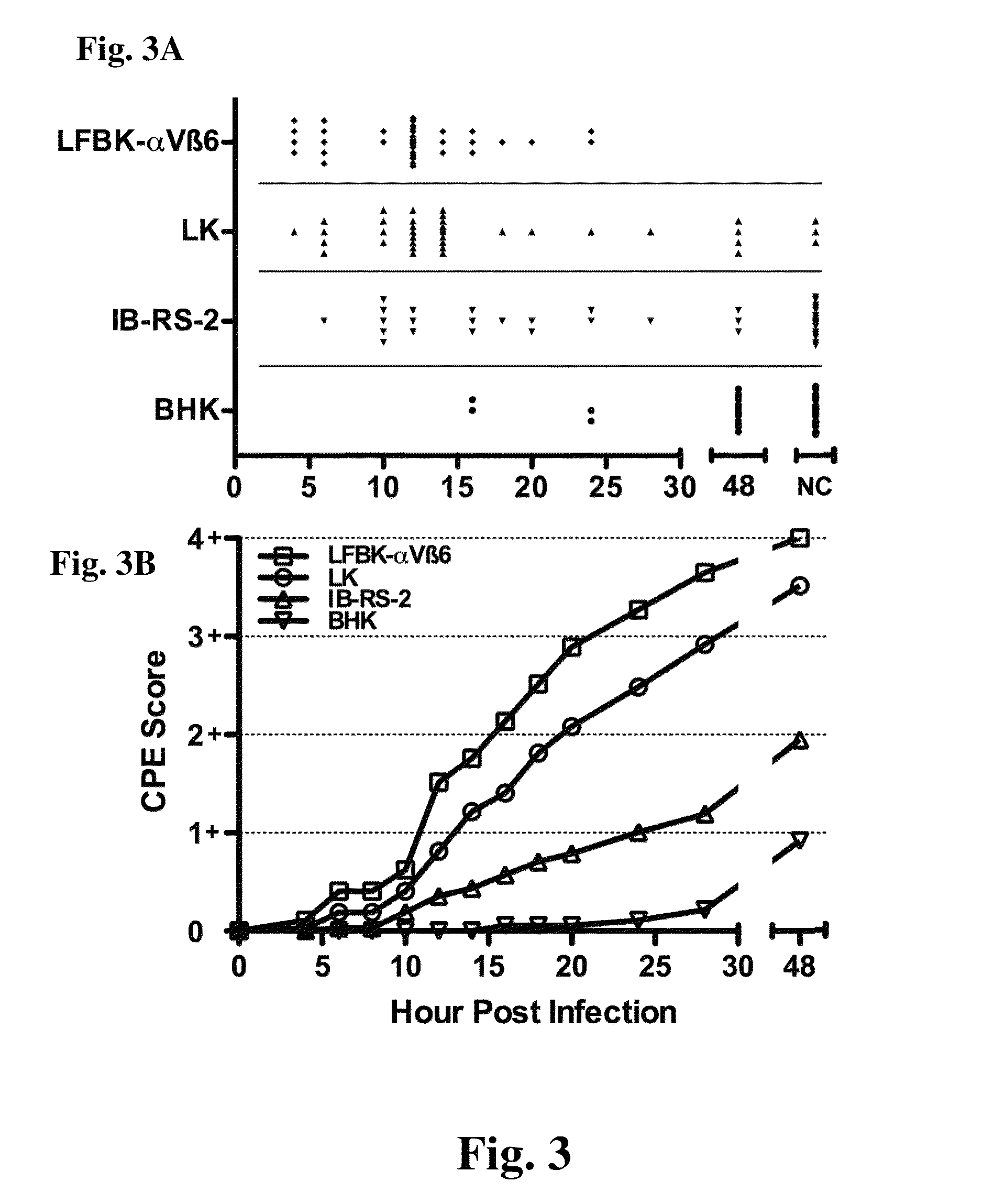Continuous porcine kidney cell line constitutively expressing bovine αVβ6 integrin with increased susceptibility to foot and mouth disease virus
a cell line and continuous technology, applied in the field of transgenic cell lines, can solve the problems of affecting the rapid implementation of control measures, affecting the detection accuracy of fmdv serotypes, so as to facilitate fmdv isolation and improve the accuracy and rapid diagnosis of the fmdv serotype involved
- Summary
- Abstract
- Description
- Claims
- Application Information
AI Technical Summary
Benefits of technology
Problems solved by technology
Method used
Image
Examples
example 1
LFBK Cells Expressing Bovine αvβ6 Integrin: Growth and Characterization
[0056]LFBK cells were propagated in DMEM supplemented with 10% fetal bovine serum and antibiotics as previously described (Piccone et al. 2009. J. Virol. 83:6681-6688) and used for these experiments between passages 64 and 71. LFBK-αVβ6 cells were propagated in the same manner as LFBK cells and used at the passage indicated in each experiment. BHK cells, used between passages 62 and 67, were propagated in MEM supplemented with 10% calf serum, 10% tryptose phosphate broth and antibiotics. Primary lamb kidney (LK) cells, generously supplied by the APHIS Diagnostic Service Section at PIADC, were propagated in DMEM supplemented with 10% fetal bovine serum, antibiotics and sodium pyruvate and used directly from cryovials or at passage 1 as indicated. IB-RS-2 cells were used between passage 129 and 137 and MVPK cells were used between passages 38 and 41; both of these cell lines were propagated in MEM supplemented with...
example 2
Susceptibility of LFBK-αVβ6 Cells to Animal-Derived FMDV of all Serotypes
[0065]In order to determine the susceptibility of LFBK-αVβ6 cells to animal-derived FMDV strains and compare with that of LFBK, primary lamb kidney (LK), BHK, and two swine kidney cells lines (IB-RS-2 and MVPK), each cell type was infected with serial dilutions of infected tissue macerates or vesicular fluid obtained from animals experimentally infected with each of the FMDV serotypes. The viruses used in this experiment are listed in Table 1.
[0066]
TABLE 1Animal-derived viruses used in this study.SampleVirusSpeciesSample TypeA24 CruzeiroswineVesicular Fluid (VF)A24 CruzeirobovinePool of Tongue Tissue Homogenateand Vesicular FluidO1 ManisabovineVesicular FluidO1 ManisaswineVesicular FluidAsia1 ShamirbovineTongue Tissue HomogenateAsia1 ShamirswineVesicular FluidC3 ResendeswineVesicular FluidC3 ResendebovineTongue Tissue HomogenateO Taiwan 1997swineVesicular FluidO / TAW / 35 / 1997O UKGswineVesicular FluidUKG / 35 / 2001SA...
example 3
Detection of FMDV in Diagnostic Tissue Samples
[0070]LK cells, BHK, IB-RS-2 and LFBK-αVβ6 were seeded onto 48-well cell culture plates 48 hours prior to infection. LK cells were seeded directly from storage cryovials. LFBK-αVβ6 cells were seeded at passage 32, IB-RS-2 at passage 136 and BHK-21 at passage 66. Diagnostic lesion tissues were disrupted and virus isolated after centrifugation through a Spin-X purification column (Costar) as described in (Pacheco et al. 2010, supra). 100 μl of a 1:10 dilution of these tissue macerates were used to infect each cell type for 1 hour at 37° C. After adsorption, 400 μl of growth media was added to each well and the plates were incubated at 37° C. Starting at 4 HPI, visual evidence of cytopathic effects was recorded every 2 hours until 20 HPI, then at 24, 28 and 48 HPI. At 48 HPI, all wells were fixed with 50% acetone:50% methanol and wells negative for cytopathic effects were immunohistochemically stained with a monoclonal antibody to FMDV 3D p...
PUM
 Login to View More
Login to View More Abstract
Description
Claims
Application Information
 Login to View More
Login to View More - R&D
- Intellectual Property
- Life Sciences
- Materials
- Tech Scout
- Unparalleled Data Quality
- Higher Quality Content
- 60% Fewer Hallucinations
Browse by: Latest US Patents, China's latest patents, Technical Efficacy Thesaurus, Application Domain, Technology Topic, Popular Technical Reports.
© 2025 PatSnap. All rights reserved.Legal|Privacy policy|Modern Slavery Act Transparency Statement|Sitemap|About US| Contact US: help@patsnap.com



